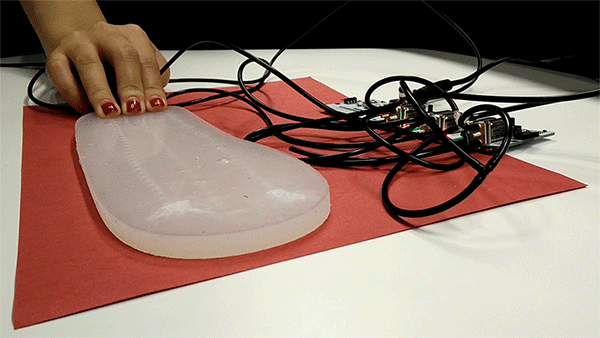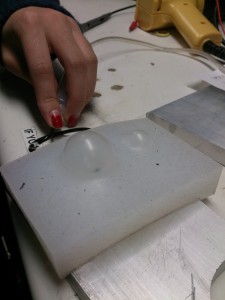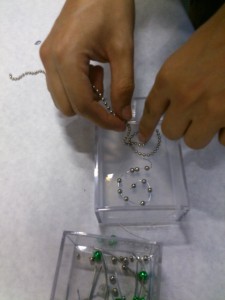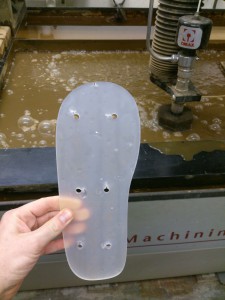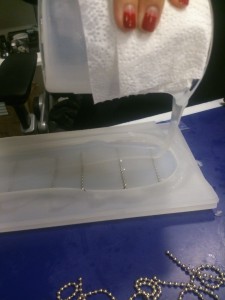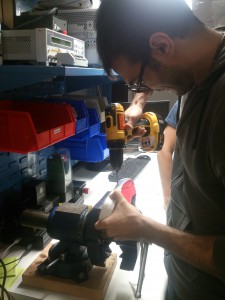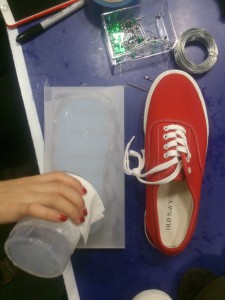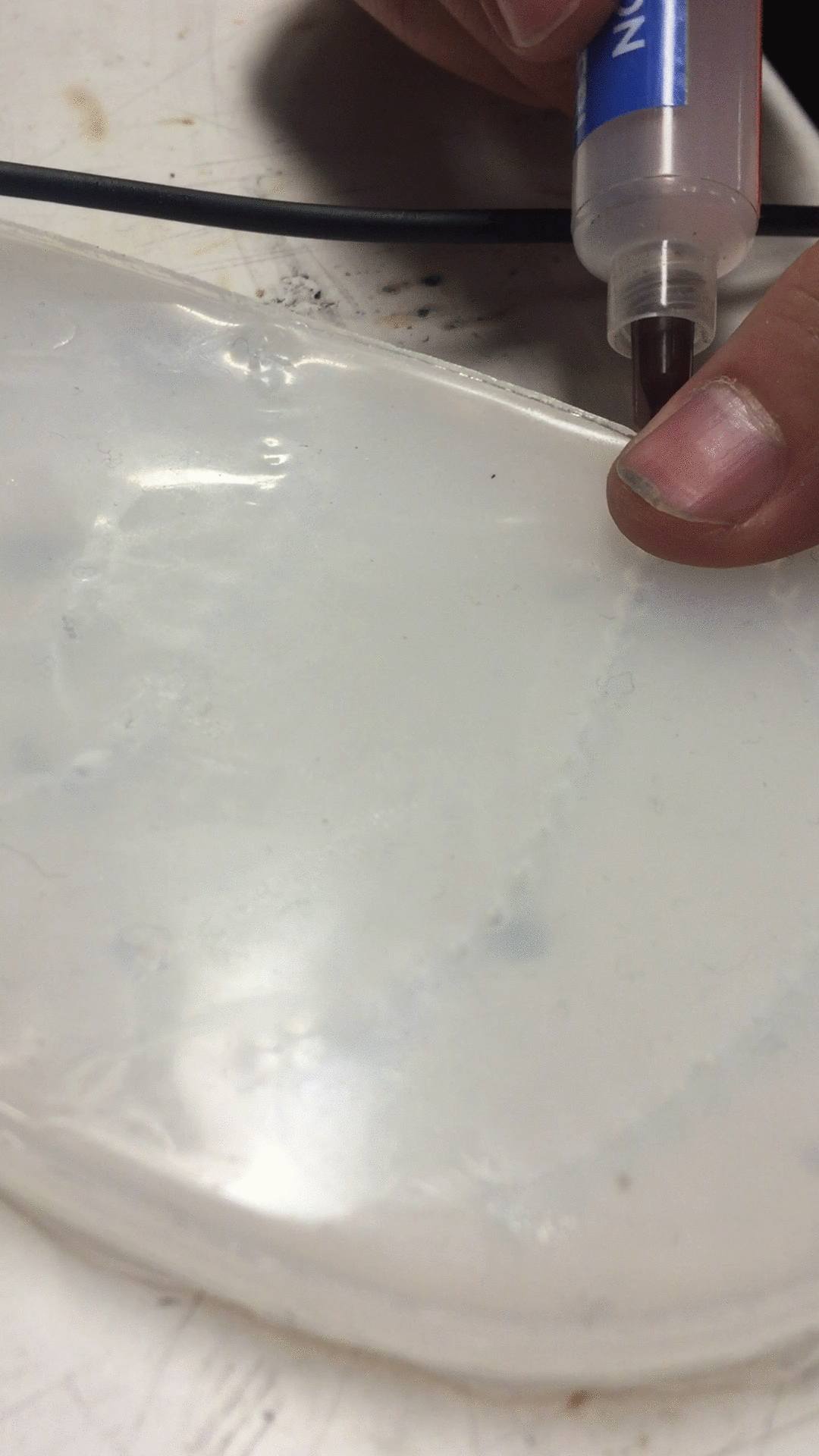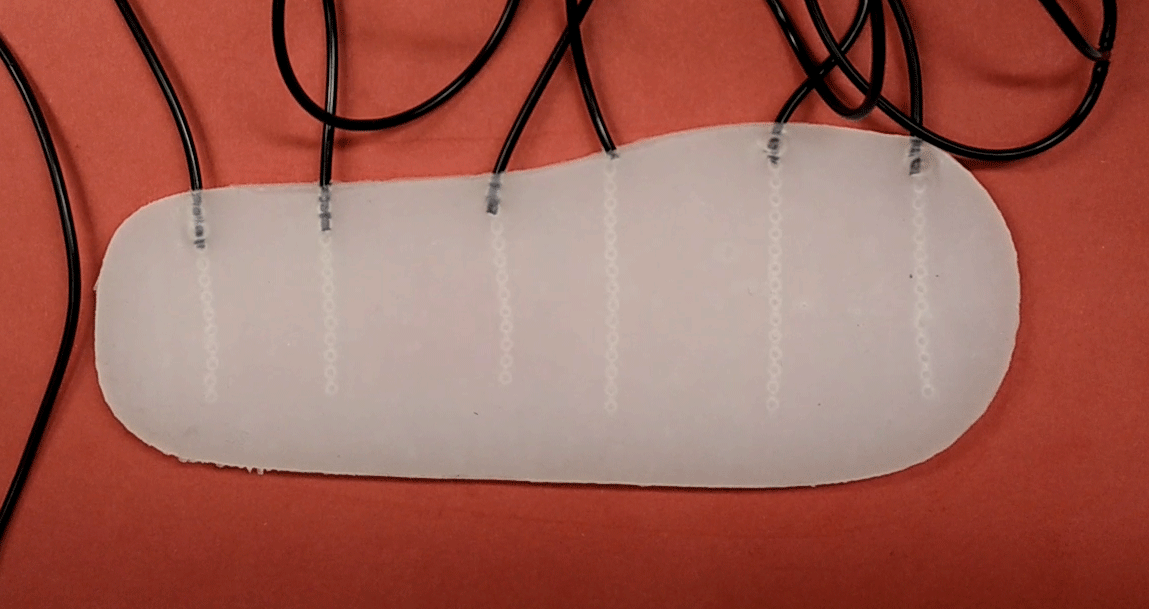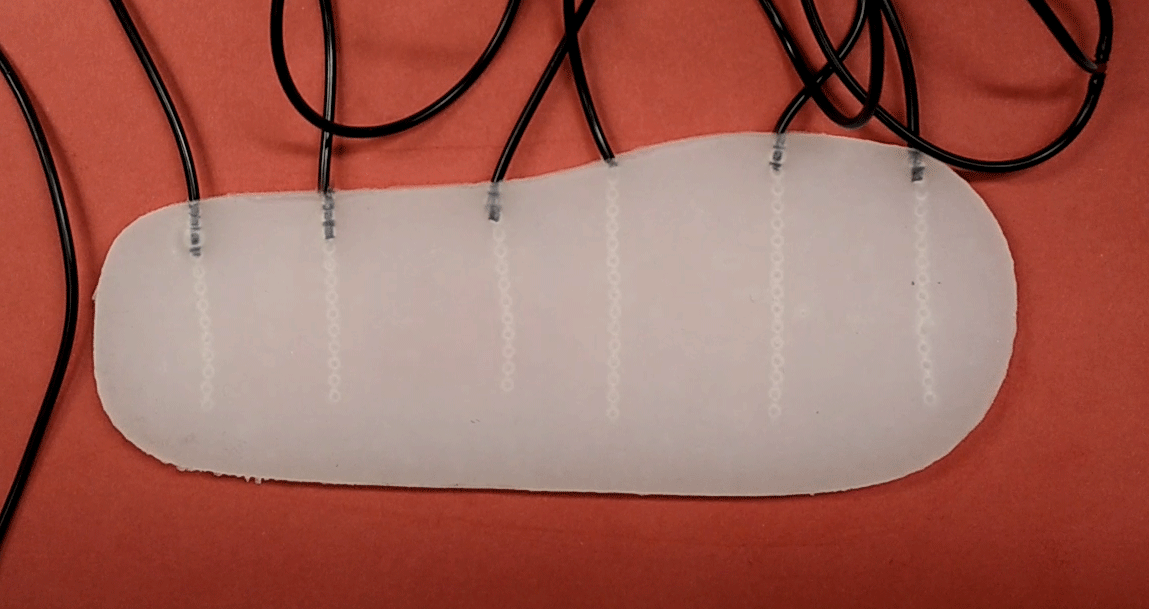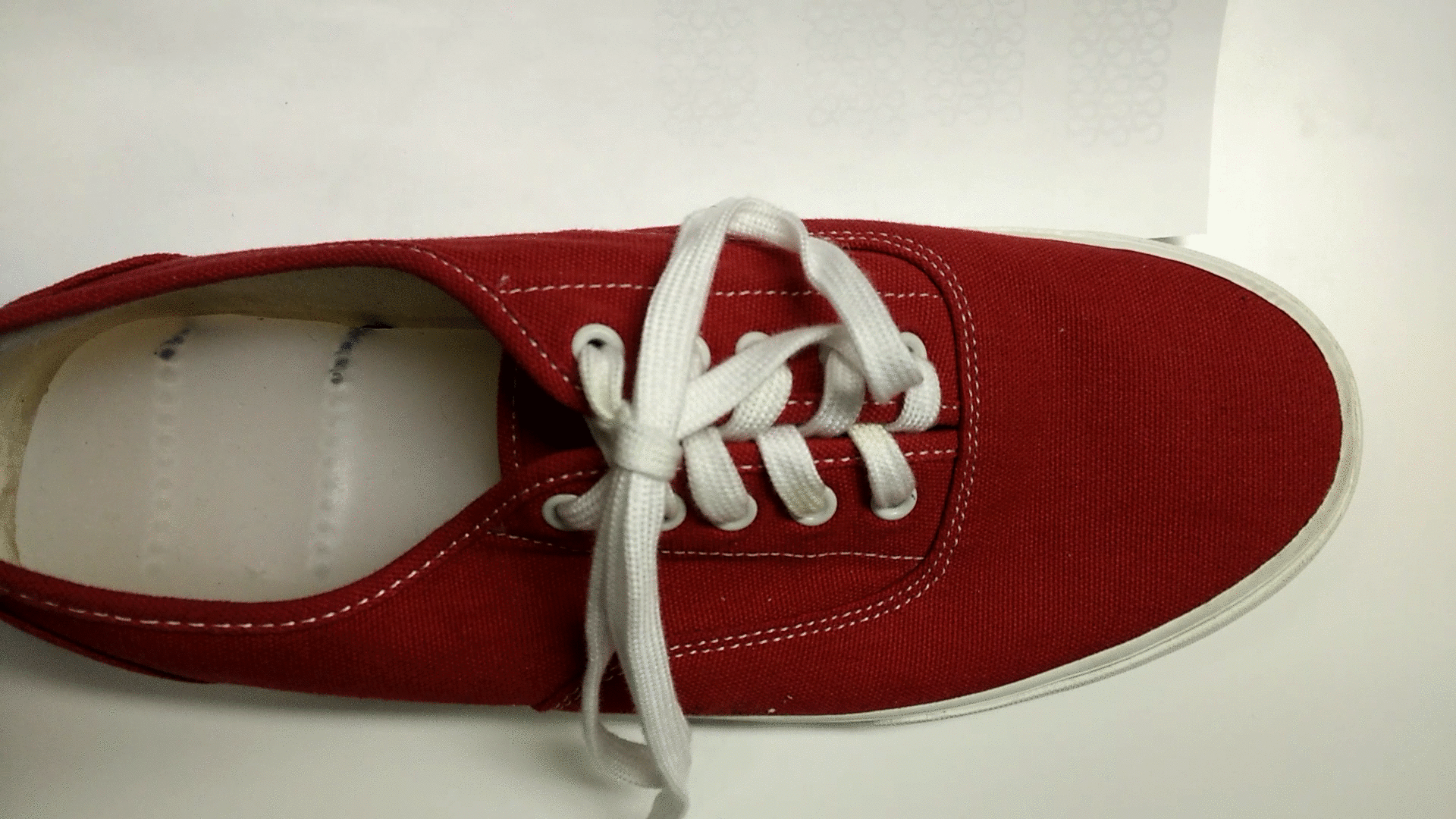PneuiFeet
Thoma Sanchez | Scott Penman | HyeJi Yang | Donald Derek Haddad
Our ancestors used the bottoms of their feet to tell them about the world – as our only constant point of contact with the earth, our feet inform us about terrain, warn us about potential danger, and keep us balanced and upright. We see evidence of this in the fact that the bottom of the foot has one of the most dense concentrations of neural receptors in the body. These days, however, we miss that fact: Our feet are all too often cushioned and insulated from any amount of sensory feedback whatsoever.
PneuiFeet attempts to address this by introducing pneumatically-actuated sensations directly beneath the foot. In our early iterations of the project, we introduced this idea through the use of a carpet – a bathroom or kitchen rug, for instance, that would relay information to you in the morning while you got ready for the day. We later made the rug mobile by converting it to a pair of slippers: Now the capability travels with you. Finally, we settled on a silicone insole, tying into an existing market and permitting the technology to traverse outside the home.
Design + Build
Building on the work of the Dynamic Texture Change project (Yao et al), we began by experimenting with different chamber formations: point, line, arc, spiral, etc. We tested the resulting actuations with both our feet and our hands, finally settling on a chain of metal beads that was easy to prototype, simple to remove from the solidified silicone, and effective at creating a sensation (even under pressure).
Later, we moved from rectangular casts to an actual slipper shape. We created molds for a women’s size 6 and a men’s size 10.5 slipper, although ultimately we only cast iterations of the former. The molds were waterjet cut from 1/4″ thick polycarbonate and glued together to create the desired thickness. Two different configurations were cast: One with three long chambers running parallel with the feet, and one with six shorter chambers running perpendicular to the feet.
Finally, the insole was inserted into a modified shoe for testing. Holes were drilled in the shoe to allow the entrance of pneumatic tubes from the pump and microcontroller.
For visual purposes, we have demonstrated the actuation of the insole outside of the shoe.
Applications
The applications for this technology are manifold. From AR to VR, to medicine, fitness, and social media, haptic feedback is increasingly being realized as critical to our digital interactions. Below we present three possible scenarios:
1. Reflexology
The study of reflexology aims to provide relaxation and wellness through foot massage, based on the theory that there are reflex points on the feet mapped to every point in the body. This is an ancient practice that enjoys modern relevance in everything from foot massages to acupuncture. If the chambers of PneuiFeet can be made small enough (perhaps through the aid of a rigid “focusing” layer that would not allow bubble expansion), then these insoles could be programmed to target different points in the body, as needed.
2. Diabetic sensory neuropathy
This gradual nerve dysfunction is a common side effect of diabetes. It results in loss of sensation in the sensory extremities of the body, including the feet. While treatment for diabetes focuses largely on glucose levels, some patients have reported symptom alleviation through the use of biofeedback (“Diabetic Neuropathy”), such as that provided by PneuiFeet. In addition, patients could use PneuiFeet to monitor the neuropathy, reporting at regular intervals whether the sensations are increased or decreased (without having to see a specialist).
3. Navigation
Finally, we see great potential for the use of PneuiFeet in non-visual sensory navigation. Research has shown that even simple stimulation of certain places on the bottom of the feet can have an impact on “sensory steering” (Zehr et al). Linked with GPS and a predetermined route, PneuiFeet could provide turning information by actuating in individual shoes. PneuiFeet could also increase or decrease the frequency of its inflation in order to encourage the user to speed up or slow down, perhaps based on traffic conditions or weather reports. In addition, PneuiFeet could connect with a variety of sensors or public infrastructural systems to offer information for the visually impaired, such as when a crosswalk signal is activated.
References
“Diabetic Neuropathy (Nerve Damage) – An Update.” Diabetic Neuropathy. N.p., n.d. Web. 26 Oct. 2015.
Yao, Lining, Ryuma Niiyama, Jifei Ou, Sean Follmer, Clark Della Silva, and Hiroshi Ishii. “PneUI: Pneumatically Actuated Soft Composite Materials for Shape Changing Interfaces,” 13–22. ACM Press, 2013. doi:10.1145/2501988.2502037.
Zehr et al.: Cutaneous stimulation of discrete regions of the sole during locomotion produces “sensory steering” of the foot. BMC Sports Science, Medicine, and Rehabilitation 2014 6:33.

